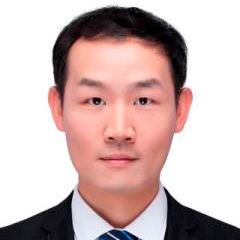Application of CFD Simulations to Marine Hydrodynamic Problems
A special issue of Journal of Marine Science and Engineering (ISSN 2077-1312). This special issue belongs to the section "Ocean Engineering".
Deadline for manuscript submissions: closed (15 April 2024) | Viewed by 6759
Special Issue Editors
Interests: hydrodynamics; flow control; flow perception; CFD
Special Issues, Collections and Topics in MDPI journals
Interests: hydrodynamics; fluid-structure interaction; computational fluid mechanics; environmental fluid mechanics; coastal engineering; ocean engineering
Special Issues, Collections and Topics in MDPI journals
Special Issue Information
Dear Colleagues,
In recent years, the applications of CFD simulations to marine hydrodynamics and marine engineering problems have grown considerably.
This Special Issue responds to the need for a textbook that unifies various issues on the applications of CFD simulations to marine hydrodynamics problems, and also to applications of fluid–structure interactions in coastal and ocean engineering.
It must contain specialized research in computational fluid mechanics that includes a balanced approach between computational, empirical and theoretical methods, but in relation to marine, coastal or even river and waterway environments.
Dr. Peng Du
Prof. Dr. Abdellatif Ouahsine
Guest Editors
Manuscript Submission Information
Manuscripts should be submitted online at www.mdpi.com by registering and logging in to this website. Once you are registered, click here to go to the submission form. Manuscripts can be submitted until the deadline. All submissions that pass pre-check are peer-reviewed. Accepted papers will be published continuously in the journal (as soon as accepted) and will be listed together on the special issue website. Research articles, review articles as well as short communications are invited. For planned papers, a title and short abstract (about 100 words) can be sent to the Editorial Office for announcement on this website.
Submitted manuscripts should not have been published previously, nor be under consideration for publication elsewhere (except conference proceedings papers). All manuscripts are thoroughly refereed through a single-blind peer-review process. A guide for authors and other relevant information for submission of manuscripts is available on the Instructions for Authors page. Journal of Marine Science and Engineering is an international peer-reviewed open access monthly journal published by MDPI.
Please visit the Instructions for Authors page before submitting a manuscript. The Article Processing Charge (APC) for publication in this open access journal is 2600 CHF (Swiss Francs). Submitted papers should be well formatted and use good English. Authors may use MDPI's English editing service prior to publication or during author revisions.
Keywords
- marine hydrodynamics
- fluid-structure interaction
- computational fluid mechanics
- environmental fluid mechanics
- coastal engineering
- ocean engineering
- ship waves
- waterway
- waves hydrodynamics
- naval hydrodynamics






